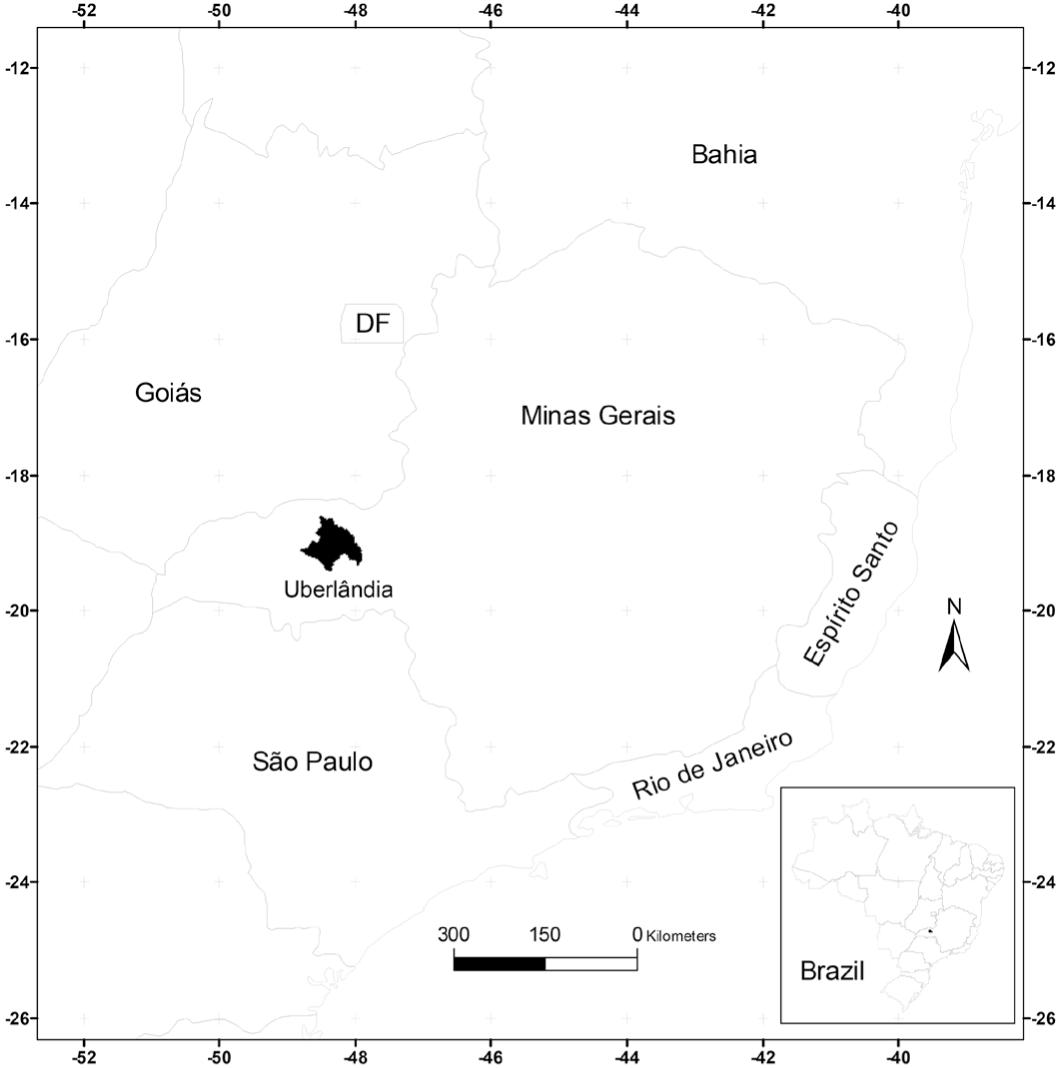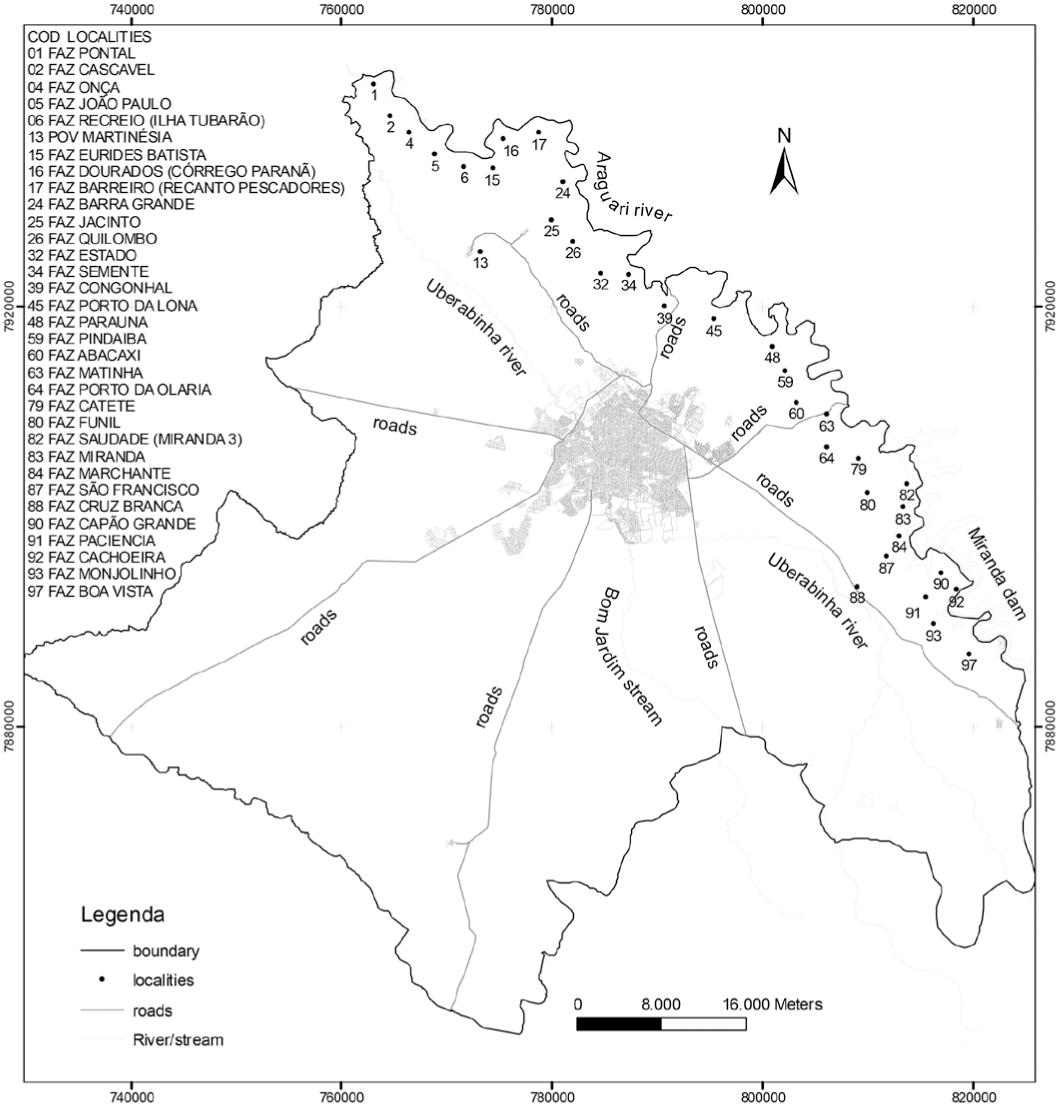We analyzed the sandflies around houses and domestic animal shelters located in residences close to forests in localities on the banks of the Araguari River, Uberlândia, MG, from February 2003 to November 2004. The phlebotomines were captured in the peridomiciliary area, where Shannon traps were utilized in the peridomicile and CDC traps in animal shelters. 2,783 specimens of sandflies were captured, 2,140 females (76.9%) and 643 males (23.1%), distributed between 17 species. The most abundant species was Nyssomyia neivai (88.1%), followed by Nyssomyia whitmani (3.1%). The presence of Lutzomyia longipalpis was also confirmed, it is the main vector of Leishmania (L.) infantum chagasi which causes visceral leishmaniasis. The presence of species involved in the transmission of leishmaniases in the municipality of Uberlândia is cause for concern. The presence of L. longipalpis indicates that its urbanization may not have been aleatory and instead occurred through the destruction of wild ecotopes. More studies of their occupation in anthropic environments need to be made.
Leishmaniasis; Ecology; Insect vectors; Epidemiology


